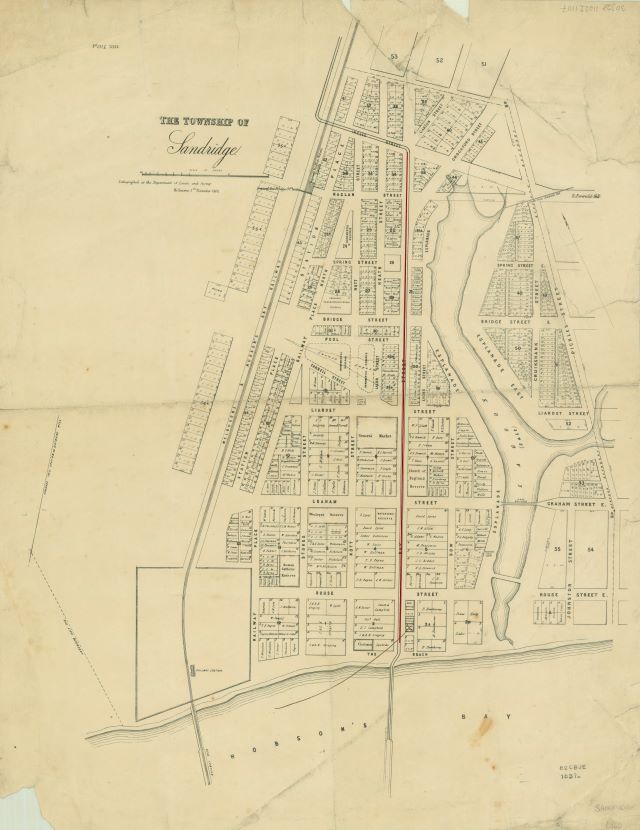
Bay Street, Port Melbourne
I’m running late this week because I was preoccupied with preparing for a Port Talks panel discussion hosted by Port Melbourne Rotary1 Can Bay St recover?
The topic was suggested, or perhaps thrust to the fore, by the confronting number of vacant shops on Bay Street – twenty seven shops up for lease at the end of September. COVID has affected Bay Street businesses in countless different ways – from travel agents to dry cleaners – no need for a fresh office shirt every day when you’re working from home.
Here are some thoughts from my presentation
Hardly surprisingly, I started with a historical perspective, referring to this 1860 map of the Township of Sandridge.

State Library of Victoria
Bay Street is highlighted in the centre of the map – straight and long, connecting the Bay to the City. The shaping forces of early Port Melbourne are clearly shown on this map – the railway to the west, Bay St, and the Sandridge Lagoon to the east. Bay Street follows the track hewn by W.F.E. Liardet and his sons through the tea tree to deliver mail from ships anchored in Hobsons Bay to the City. Its length is a challenge to its liveliness in late 2020.
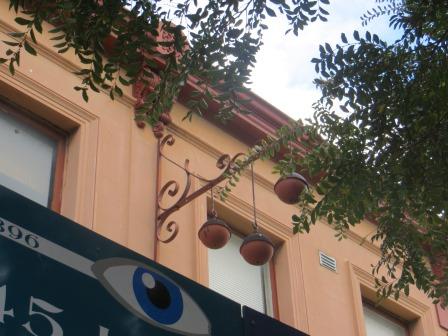
The fortunes of Bay Street have ebbed and flowed from the prosperity that created the late 1880s Victorian shops to the poverty and privation of the depressions of the 1890s and 1930s. The balls of the pawn shop above Alfred Nott optometrists are a reminder of those times.
1950s
There were 11 butchers, 12 confectioners, 7 drapers, 7 fruiterers, 10 hotels and many other businesses besides in Bay Street.
1980s
Bay Street showed the influence of post war migration with several Greek and Italian businesses. Port’s population was declining in the late 1980s. Bay Street was a through route for heavy traffic to the city and from the Port. It was busiest at lunch time serving the then large workforces of Fishermans Bend. The shops still closed on Sundays.
1990s
The newly formed City of Port Phillip (CoPP) organised itself around supporting the character and identity of its former cities – Port Melbourne, South Melbourne and St Kilda. The Bay St trader group under the leadership of Tony Hill of McCluskys Lawyers worked closely with City of Port Phillip staff to imagine a different future for Bay Street. The traders view was that there could be no renewal of Bay Street while it functioned as a through route for heavy traffic.
VicRoads was reluctantly persuaded to agree to removing a lane of traffic from Bay Street. The reclaimed road became new footpath space for cafe chairs and tables. The extent of the former footpath is marked by a row of bluestone and the line of the verandahs. The narrowed street slowed traffic, and made it easier to cross from one side of the street to the other. The Victorian shops between Graham and Bridge St became the heart of Port Melbourne. In pre-Covid times the liveliness of outdoor dining between Graham to Liardet streets was a testament to the success of the strategy.
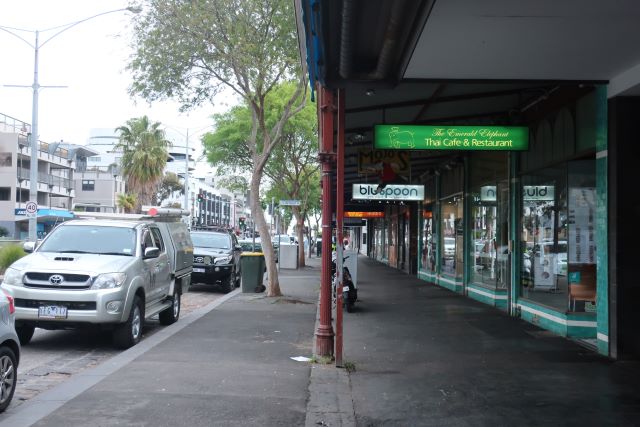
Veranda and blue stone indicate the previous extent of the footpath
At the same time, there was great pressure for high rise redevelopment of the large industrial sites between Graham Street and the Bay such as the former Envelope Factory. In the end, the battle for a mid, rather than a high rise, future prevailed. Planning guidelines ensured that the footpaths were wide and sheltered. Those developments now house many successful businesses.
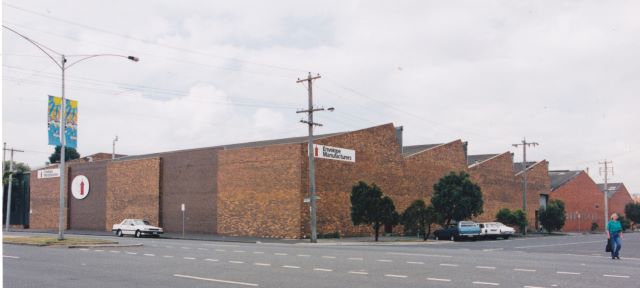
However, Bay St south of Graham Street retains the function of a through route to elsewhere.
After that brief historical overview, here are some observations from COVID-19 in Port
- Hyper local cafes serving immediately surrounding communities are thriving, several of them off Bay St: Station St Trading Company, Heart Bakes on Bridge Street, Vertue on Graham Street, Chapel Bakery north Bay Street and Bella Cosi on Beach St. Several cafes have become mini-grocers.
- Places that are hospitable, warm and welcoming and offer connection and recognition do well. (hardly surprising)
- Well designed, pleasant places such as Olive’s Corner, the Raglan Remembrance Garden (formerly a car park) are favoured for gathering and allow comfortable distancing.
- The Raglan and Station St neighbourhood brings it all together – flowers, parkland, tram stop, bicycle parking.
Some ideas for Bay St
- Make Bay Street safer and more welcoming to bike riders of all ages. There is an appetite for it as these photographs taken nearby show. Research shows that walkers and cyclists spend more in local shopping strips.
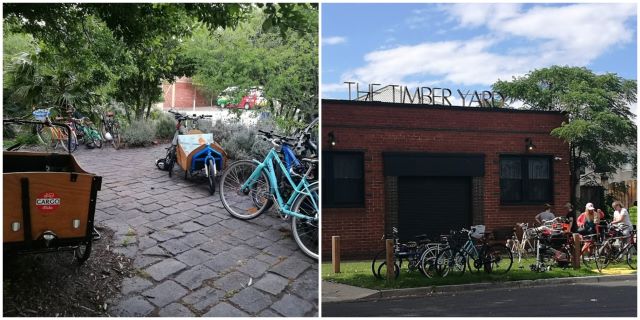
- New York’s mayor Bill di Blasio has recently said that outdoor dining, introduced at the height of the pandemic, would become a permanent feature of New York. Port could follow New York and the City of Melbourne’s lead in opening up dining onto streets where there is alternative vehicle access. Here are just some possibilities around Bay St which would offer much more space than the footpath away from the noise of through traffic and prevailing winds.
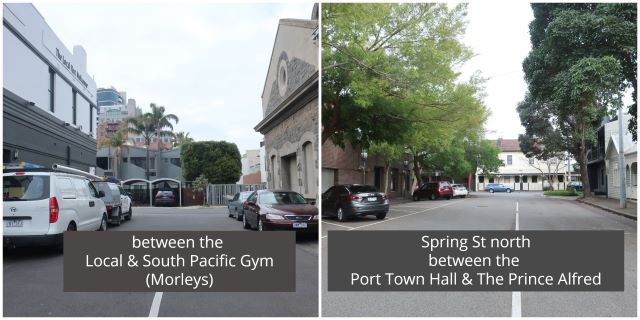
Paul Littman, President of the Port Melbourne Business Association, is an ideas man. It’s no surprise to find out that before founding Daisy Dry Cleaning he established and ran The Ideas Factory. Paul said that the session posed the wrong question. Rather than ‘Can Bay St recover? the question is ‘How will Bay St evolve?‘ since there will be no recovery to pre-Covid times because of the many challenges Bay Street faces – the opening of a new supermarket on Plummer St, the departure of the Spirit of Tasmania, as well as the move to online retailing during COVID. The Business Association is up to the challenge, brimming with ideas for the next stage of Bay Street’s evolution.
The challenges faced by Bay Street today demand bold moves of change, such as those of the 1990s, rather than wishful thinking about an old ‘normal’ which has gone.
Pondering these matters, I wandered along Bay St late yesterday afternoon. The bronze-copper window framings of the 1916 shopfronts were illuminated by the late afternoon sun. The former Zambreros has been let and will become a bakery.
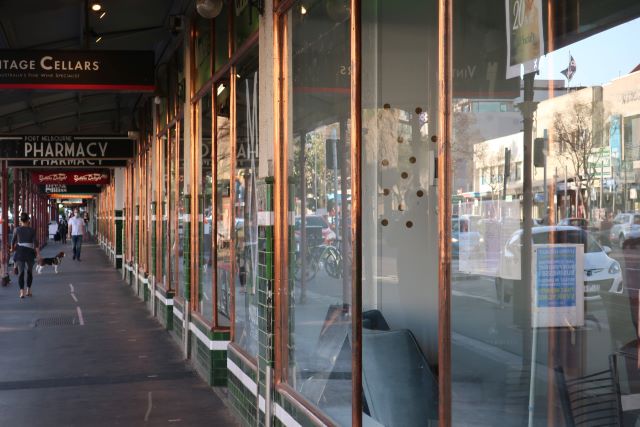
The tree in the median which once hosted a deafening evening bird chorus has died.
Which cue do we take? Can Bay St recover? How will Bay St evolve?
Perhaps we need to measure the recovery of Bay St by that old Port metric: ‘I just went down Bay St just to buy some milk and bread and an hour or two later …’
What are your thoughts on the future of Bay St? I’d love to hear them.
Thanks to
1Port Melbourne Rotary, SouthPort Community Centre, SHIP (Social Health and Inclusion Port) and the City of Port Phillip for initiating the Port Talks discussion series
Jack Bolt for his analysis of the Sands & McDougall for 1950 and other years
2 Comments
-
-
JanetBolitho
Thanks so much Linda. Paul Littman, President of the Port Melbourne Business Association, shares your idea for the area between Coles & P.M. cafe. We are lucky to have a traders' association with energy, ideas and some resources to make some good ideas happen.
-

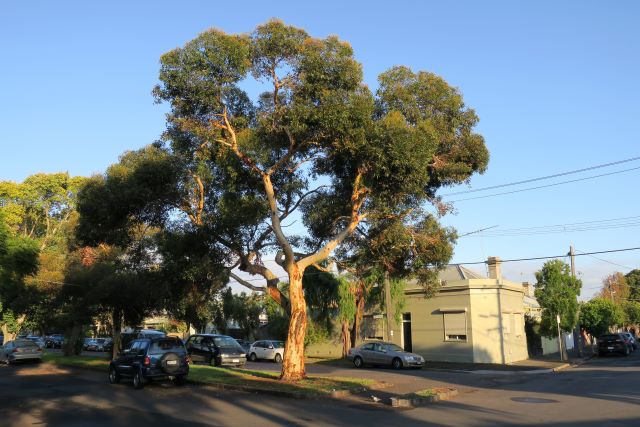
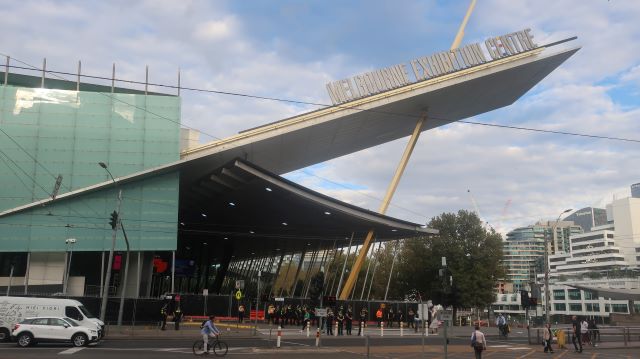

Linda Norman
Fascinating article, thank you Janet. I'd like to see the ugly concrete paths on Bay Street upgraded along both sides of Bay St. I'd also like to see the dangerous intersection of Bay and Liardet fixed perhaps by blocking off the section between PM 's cafe and the Coles ramp creating a public gathering, market and performing space, with the Brewsters building used as a local artist co-op/makers space. It would be great to see those butchers and craft stores back and more shopping variety reducing the number of hair, nail and beauty parlours.